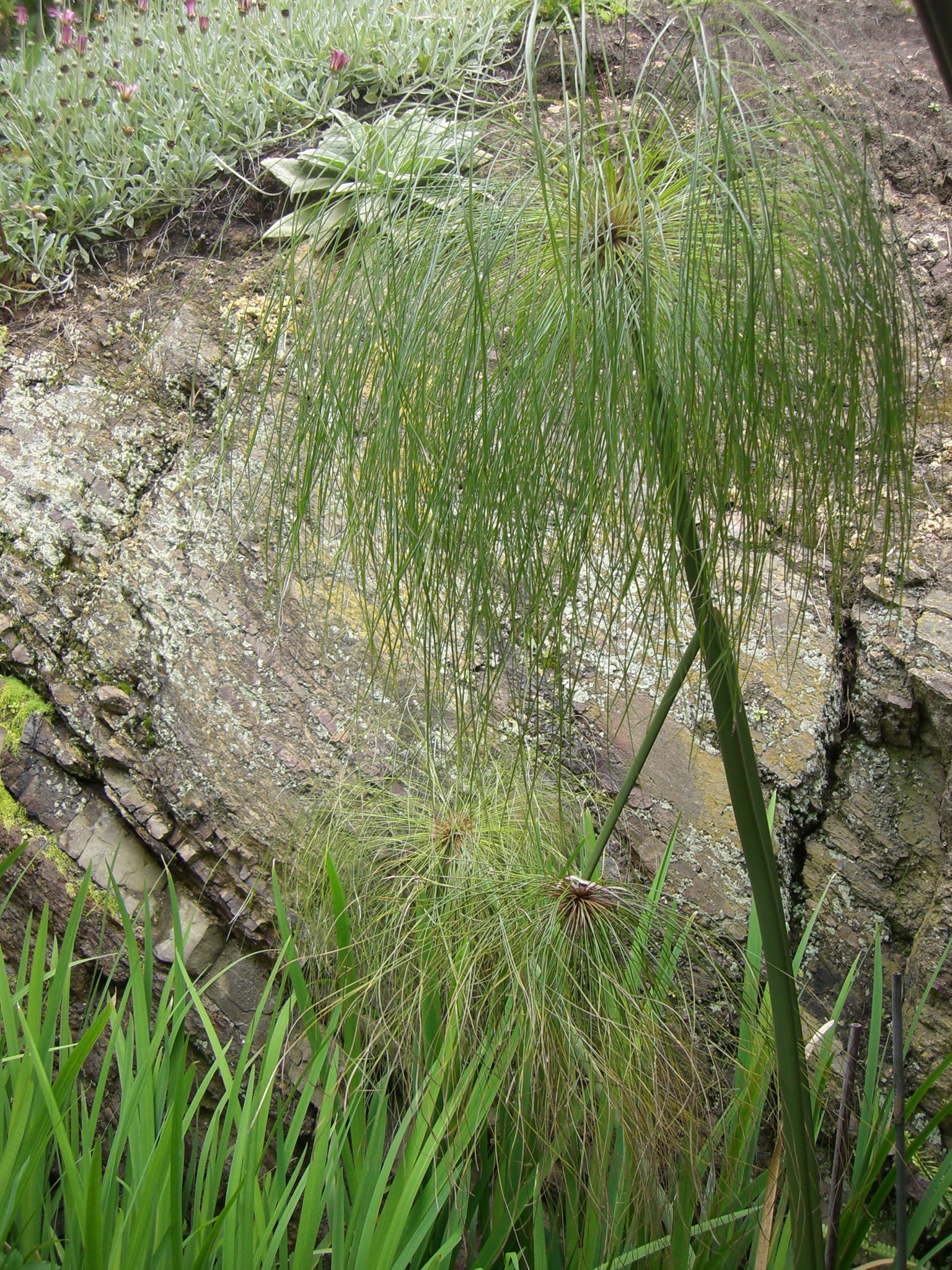
Perennial rhizomatous sedge to about 4 m tall with thick triangular stems. Leaves with basal brown sheaths. Involucral bracts 4-10, to 20 cm long and 1.5 cm wide. Inflorescence with over 100 pendulous primary rays, each with a brown sheath and with 3-5 thread-like bracts subtending 3-5 spikes, each consisting of 20-30 spikelets.
Southern & tropical Africa to Egypt
Grows naturally on the banks and fringes of slow-moving water.
Classical Egyptian source of papyrus (paper) made by pressing together strips of moist pith from the stems.
Source: (2005). Cyperaceae. In: . Horticultural Flora of South-eastern Australia. Volume 5. Flowering plants. Monocotyledons. The identification of garden and cultivated plants. University of New South Wales Press.

A dwarf variant. [C. isocladus Kunth]
This name is sometimes used incorrectly for plants that are actually C. prolifer Lam.; it may become weedy and has naturalised in New South Wales wetlands.